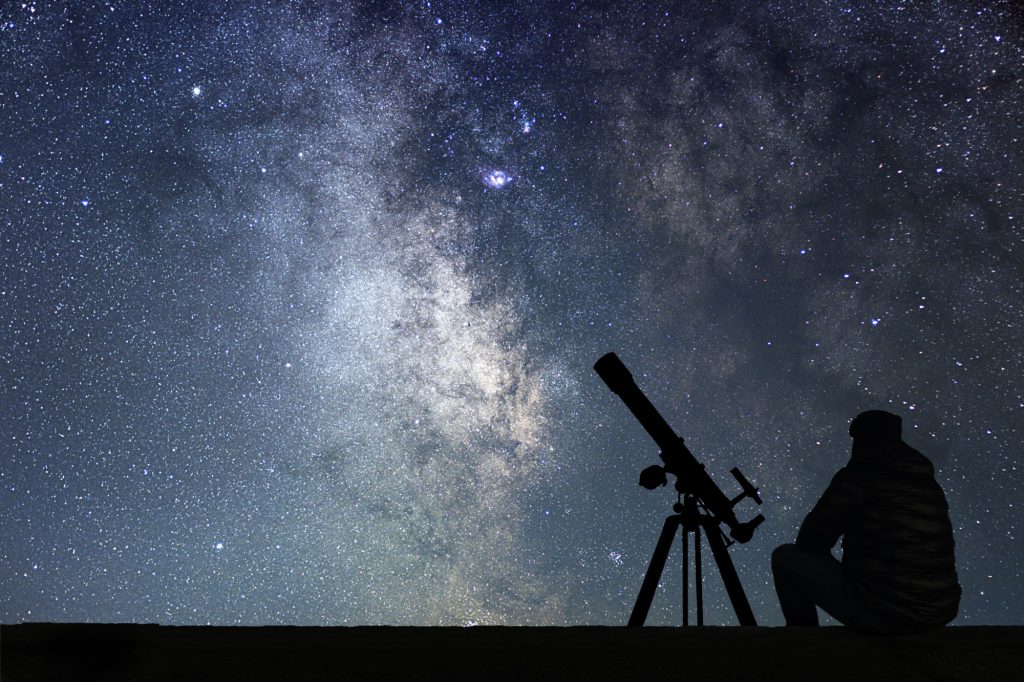
If you’ve never had the chance to fully appreciate the clear night sky, you’re in for a treat. It’s not often that we stop in the middle of our evening activities to gaze at the stars. However, once you start star gazing, it’s a bit difficult to stop.
There’s nothing like the awe you experience when looking at the stars in the universe for the first time. Now, we know that everyone has seen a star before. When you’re leaving the office late or heading out for dinner on a cool winter’s evening, you’ve glanced at the sky for a minute or two and saw the stars.
Although a quick glance can show you some pretty amazing stars in the sky, that’s nothing compared to what you’ll see if you follow these tips listed below and have a good idea of what to look out for. It’s time to become a professional stargazer!
Tips for Better Star Gazing
You could grab a blanket and climb up to the roof to relax under the stars for an hour or two. This is a recipe for a calming evening of star gazing. But if you really want to soak up everything that the universe has to offer us, you’ll want to read some of these tips below.
The Days Surrounding a New Moon
When the moon is the brightest or when it’s a full moon, the sky is lit up and it’s not dark enough to see all of the surrounding stars. A few stars here and there will still be visible, but you won’t get to see too much. Therefore, the best time to stargaze is any day surrounding the full moon.
This includes the days before, during, and after. This is due to the fact that the moon is not visible during this time, meaning its light won’t fade the stars.
The Best Seasons for Star Gazing
During the summer, the days are longer and the nights are shorter. It takes a lot longer for the sky to become dark during the summer. This leaves you with very little time to star gaze.
Because of this, the best time to witness all of the beautiful stars is during the fall, winter, and spring. However, winter is one of the best seasons for star gazing. The sky is clear and humid-free and gets darker a lot sooner.
The Perfect Height for Optimal Views
If you can handle the cold air, it’s best to get to a higher point. You’ll want as much of a view as possible. For those living in cities, buildings and pollution can block your view.
The higher up you get, the better. Even a simple street light can obstruct your view of the stars.
Invest in a Star Chart
Although there are plenty of new apps available for you to download, you should consider investing in a star chart. Star charts are awesome for the simple fact that they’re old school, but they also teach you more than the modern star chart apps. It’ll help you learn the skies well.
Download a star chart from the internet and print it out.
Find Satisfaction in Your Binoculars
You might feel tempted to purchase a telescope right from the beginning. However, this isn’t something that you need to do or should do right away. Using a telescope takes a bit of skill and if you don’t know what you’re looking for, things can get tricky.
Instead, consider finding satisfaction in your standard pair of binoculars. You might be surprised by how many details of the sky you’re able to see when using them.
The Brightest Luminaries
Now that you have some tips on how to stargaze properly, it’s time to make a list of some of the brightest luminaries to be on the lookout for. Having this list in hand is a great tool when wanting to have the best star gazing experience possible. And if you find a favorite star, you can even join in the star naming gallery and name your own star!
VY Canis Majoris
The VY Canis Majoris is one of the largest stars known to be in our galaxy. It’s a red hypergiant and has a radius of about 1,800-2,100 of that of the sun! It’s located in the Canis Major constellation and is about 3,900 light-years away from the earth.
Betelgeuse
During the months of October through March, you can easily spot out Betelgeuse. Out of all the red supergiants, Betelgeuse is the most well known. It’s only 640 lightyears away from the earth. That’s super close compared to the others!
It’s also located in one of the more famous constellations known as, Orion. Its radius is around 1,000 times that of the sun.
WOH G64
WOH G64 is another red supergiant but is located within the constellation, Dorado. It’s located outside the milky way and is about 170,000 lightyears away from the earth. It was once 25 times the size of the sun but has lost some of its radii.
It’s now only around 1,540 times the size of the sun. There’s a thick cloud of gas and dust surrounding it in the shape of a disk.
Are You Ready to Start Star Gazing Like a Pro?
By following these tips, you’ll be ready to start star gazing like a pro. And once you know what some of the brightest luminaries are out there to look for, nothing will stop you from becoming the next astronomer!
Want to read more posts similar to this one? Be sure to visit us regularly for more!